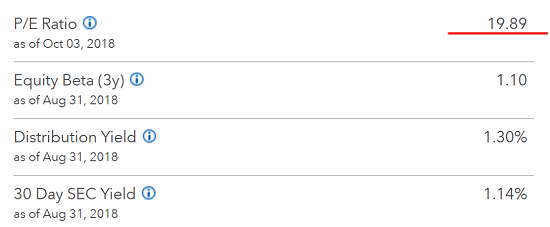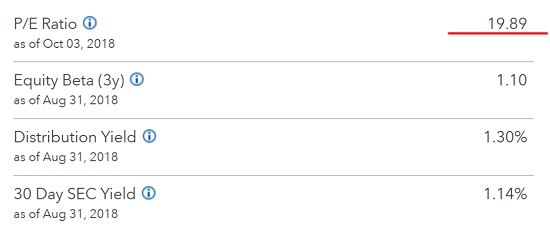The Russell 2000 is an index that tracks small cap stocks.
Investors frequently buy funds based on this index to get exposure to small, fast-growing companies.
On the surface, this makes sense, since small caps have outperformed large stocks over the long run.
However, there are some serious problems with the Russell 2000. As I write, iShares, which owns the largest Russell 2000 ETF (NYSE: IWM), advertises the fund’s P/E (price-to-earnings) ratio as being 19.89 (meaning you have to invest $19.89 for every $1 of earnings).

The P/E ratio is a critically important valuation metric. It tells you whether a stock or group of stocks is cheap or expensive based on earnings.
A P/E ratio of 19 is slightly above the long-term average of roughly 15. But it’s still not outrageously expensive.
The problem lies in how iShares calculates the Russell 2000’s P/E. In an index fund, you typically take all of the companies’ earnings (and losses) and average them out by market capitalization.
But the iShares Russell 2000 ETF doesn’t include companies that have negative earnings in its P/E calculation. Neither does FTSE Russell, which maintains the index…
But according to USA Today, fully one-third of the Russell 2000 companies are losing money.
IShares does mention this unique calculation method, but only if you click the little “information” button beside the “P/E ratio.” And it doesn’t mention that this is not the standard way to calculate earnings ratios.
So what’s the real P/E ratio of the Russell 2000? According to The Wall Street Journal, it’s actually 58. That’s nearly three times higher than the advertised P/E of 19.89!
So when I hear someone say they’re buying the iShares Russell 2000 ETF because small caps are “cheap,” it makes me want to tear my hair out.
“Official” Numbers
The Russell 2000 P/E deception is not unique. Lately, I’ve noticed that the goalposts have been moved on all sorts of important numbers.












Leave A Comment